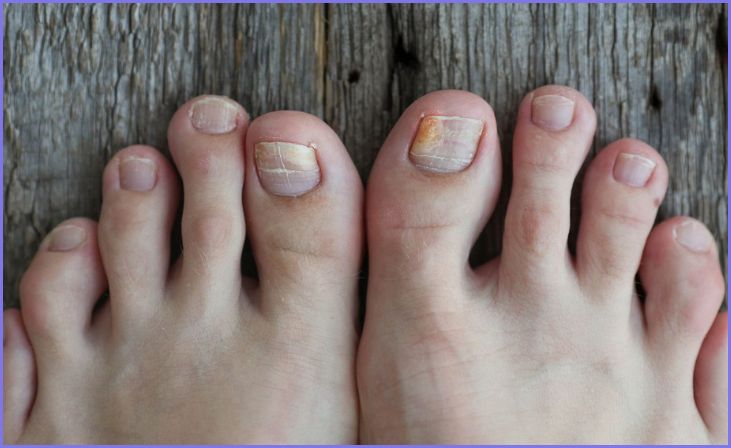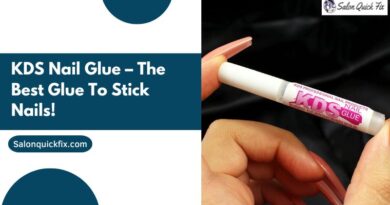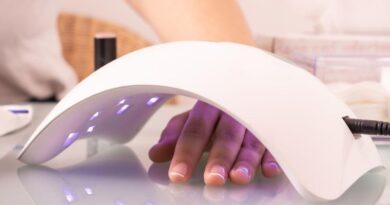Welcome to our comprehensive guide on toenail fungus! While it might not be the most glamorous topic, understanding and managing toenail fungus is crucial for your foot health. We’ve designed this guide to be your go-to resource for all things related to toenail fungus, with easy-to-read language and practical advice.
Toenail fungus, also known as onychomycosis, is a common and often underestimated condition that affects millions of people worldwide. If left untreated, it may result in discomfort, agony, and even shame. But fear not, as we’re here to demystify toenail fungus and equip you with the knowledge and tools to tackle it effectively.
In this comprehensive guide, we will walk you through its causes, symptoms, prevention, and effective treatment options, empowering you with the knowledge to step confidently towards healthier, happier feet. So, let’s get started on this journey to healthier toes!
What is Toenail Fungus?

Onychomycosis, sometimes referred to as toenail fungus, is a typical fungal infection that affects the toenails. It occurs when microscopic fungi, often called dermatophytes, enter the nail through small cracks or cuts in the skin around the nail or through the nail itself. These fungi thrive in warm, moist environments, making your shoes and socks a potential breeding ground.
Symptoms and Causes of Toenail Fungus
Discover the common symptoms and underlying causes of toenail fungus, helping you understand and address this pesky nail condition.
Symptoms of Toenail Fungus:
- Nail Discoloration: Nail discoloration means your toenail or fingernail changes color, often turning white, yellow, green, brown, or black. It happens because of things like fungal infections, injuries, or using nail polish too often. Fungus can sneak under your nail and make it look yellow or brown, while an injury might turn it black or green.
- Thickening:When you have toenail fungus, one of the common signs you might notice is the thickening of your toenail. This means your nail becomes bulky and harder than usual, and it might look like it’s growing in layers. Toenail fungus is caused by tiny fungi that sneak under your nail, making it thicker and uneven.
- Distorted Shape: If you have toenail fungus, you might notice that your toenail starts to change shape. It can look warped or twisted instead of its usual smooth and straight appearance. Toenail fungus is caused by tiny fungi that get under your nail, making it sick and misshapen. This distortion can make your nail uncomfortable and sometimes even painful.
- Pain or Discomfort:When toenail fungus takes hold, it can bring pain or discomfort along with it. You might feel tenderness or aches around the infected nail. Sometimes, the pressure from the thickened or distorted nail can cause discomfort, especially when wearing shoes. In more severe cases, the fungus might even cause sharp pain. It’s crucial not to ignore this symptom, as it could signal a worsening infection.
Causes of Toenail Fungus:
- Fungal Infection: Toenail fungus is primarily caused by fungi, often dermatophytes, that thrive in warm and moist environments. These fungi can invade the toenail through small cracks or openings in the skin or nail.
- Risk Factors: Certain factors increase the risk of developing toenail fungus, including aging (as nails grow more slowly and thicken with age), having a weakened immune system, wearing tight or non-breathable shoes, and having a history of athlete’s foot.
- Contagious: Toenail fungus is contagious and can spread from person to person in shared environments like public showers, swimming pools, and nail salons.
- Injury or Trauma: Physical injury or trauma to the toenail can create an entry point for fungi to infect the nail.
- Poor Foot Hygiene: Lack of proper foot hygiene, such as not keeping feet clean and dry, can contribute to toenail fungus development.
- Chronic Conditions: Individuals with certain chronic conditions like diabetes are more susceptible to toenail fungus.
Understanding these symptoms and causes is crucial for early detection, treatment, and prevention of toenail fungus. If you suspect a fungal infection, consult a healthcare professional for appropriate guidance and treatment options.
For More- How to dry nail polish faster?
How long does it take for a toenail to grow back?
The time it takes for a toenail to grow back varies based on several factors. On average, toenails grow at a rate of about 1/8 inch per month. However, the complete regrowth of a toenail can take anywhere from six months to a year.
Several factors influence the speed of toenail regeneration, including individual genetics, age, overall health, and the specific circumstances of toenail loss or damage. For example, injuries or fungal infections might affect the growth process.
Maintaining good foot hygiene, a balanced diet, and addressing any underlying health issues can support healthy toenail growth. While toenails generally regenerate over time, consulting with a healthcare professional can provide personalized advice and address concerns related to toenail health and regrowth.
Scraping Out Toenail Fungus: Is it Effective?

Scraping out toenail fungus, also known as debridement or debridement therapy, is a method that involves physically removing infected nail material using specialized tools. While it may seem like a straightforward approach, it’s important to understand its effectiveness, limitations, and potential risks.
Effectiveness:
- Temporary Relief: Scraping can provide temporary relief by reducing the thickness of the infected nail and relieving pressure or discomfort.
- Enhancing Topical Treatments: It may be used in conjunction with topical antifungal medications to help the medication penetrate deeper into the affected nail.
Limitations:
- Limited Success: Scraping alone is generally not considered a highly effective treatment for toenail fungus. It may provide temporary cosmetic improvement but is unlikely to completely eradicate the fungal infection.
- Risk of Injury: There is a risk of injury or damage to the surrounding skin and nail structures if scraping is not done by a trained professional.
- Reoccurrence: Toenail fungus can often reoccur after scraping if the underlying fungal infection is not adequately treated.
How to Stop Toenail Fungus from Getting Worse?
PODERM – 2 in 1 TOENAIL INTEGRAL RENEWAL

TOENAIL INTEGRAL RENEWAL
- Brand – PODERM
- Item Form – Serum
- Liquid Volume – 0.27 Fluid Ounces
- Specialty – Damaged,Repair
- Number of Items – 1
Preventing toenail fungus from getting worse and managing its progression involves a combination of good foot hygiene, lifestyle adjustments, and early intervention. Here are some steps you can take to stop toenail fungus from worsening:
1. Keep Your Feet Clean and Dry
One of the best ways to steer clear of toenail fungus is to practice good foot hygiene. Start by washing your feet daily with soap and warm water, making sure to clean between your toes where fungi like to hide. Afterward, be thorough in drying your feet, especially between the toes, as fungi love moisture.
2. Choose Breathable Footwear
Your choice of shoes can play a big role in keeping toenail fungus at bay. Opt for footwear made of breathable materials like leather or canvas. These materials allow air to circulate around your feet, which helps keep them dry and less susceptible to fungal growth. Tight-fitting or non-breathable shoes can trap moisture, creating an ideal environment for fungi to thrive.
3. Use Antifungal Powders or Sprays
Antifungal powders or sprays can be your secret weapon against toenail fungus. These products are designed to keep your feet dry and create an environment where fungi struggle to survive. Before putting on your socks, sprinkle or spray the antifungal product on your feet and inside your shoes. This extra layer of protection helps to control moisture, reduce sweating, and fend off potential fungal invaders.
4. Wear Moisture-Wicking Socks
Moisture-wicking socks are like superheroes for your feet when it comes to preventing toenail fungus. These socks are specially designed to pull sweat and moisture away from your skin, keeping your feet dry and comfy. When your feet stay dry, it’s harder for fungi to grow and cause trouble. Look for socks made from synthetic blends or natural materials like merino wool, which are excellent at wicking away moisture.
5. Practice Good Nail Care
Taking care of your toenails is an essential part of keeping toenail fungus at bay. Trim your nails regularly, keeping them neat and short, and always cut them straight across to avoid ingrown nails. File the edges gently to prevent sharp edges that can injure the nail or surrounding skin. Clean under your nails with a soft brush to remove dirt and debris where fungi can hide.
6. Avoid Walking Barefoot in Public Areas
When it comes to preventing toenail fungus, one smart move is to avoid going barefoot in public places like swimming pools, locker rooms, and communal showers. Fungi love damp, warm places, and these areas are prime real estate for them. Wearing flip-flops or water shoes in such places acts as a shield, keeping your feet away from potentially contaminated surfaces. It’s a small but effective step in reducing your risk of picking up toenail fungus.
7. Choose Proper Nail Salons
If you enjoy getting your nails done at a salon, it’s essential to choose wisely to prevent toenail fungus. Look for salons that prioritize cleanliness and hygiene. Ensure they use sterilized or disposable tools, and the footbaths are thoroughly cleaned between clients. If you notice any red flags like dirty surroundings or reused tools, it’s best to walk away.
8. Don’t Share Personal Items
Sharing personal items like nail clippers, files, or shoes might seem harmless, but it can increase your risk of toenail fungus. Fungi can hitch a ride on these items and find their way to your toenails. To stay fungus-free, always use your own nail tools and avoid borrowing or lending them. When it comes to shoes, make sure they fit well and are exclusively yours.
9. Seek Timely Treatment
Sharing personal items like nail clippers, files, or shoes might seem harmless, but it can increase your risk of toenail fungus. Fungi can hitch a ride on these items and find their way to your toenails. To stay fungus-free, always use your own nail tools and avoid borrowing or lending them. When it comes to shoes, make sure they fit well and are exclusively yours.
10. Monitor for Recurrence
Even after successfully treating toenail fungus, it’s essential to stay vigilant and monitor for any signs of recurrence. Fungal infections can be persistent, and they might come back if you’re not careful. Keep an eye on your toenails, and if you notice any changes like discoloration, thickening, or distortion, act promptly. Continue practicing good foot hygiene, wearing breathable shoes, and using preventive measures like antifungal powders or sprays.
Quickest Way to Get Rid of Toenail Fungus
Here are some Quickest Way to Get Rid of Toenail Fungus infection Pharmaceutical Treatments and Natural Remedies.
1. Pharmaceutical Treatments

Getting rid of toenail fungus quickly can be challenging because fungal infections often require time and consistent treatment. However, there are several treatment options available, and some may show faster results than others. Here are some of the quickest ways to address toenail fungus:
Prescription Antifungal Medications
- Oral antifungal medications prescribed by a healthcare professional are often considered the most effective and fastest treatment for toenail fungus. Medications like terbinafine (Lamisil) and itraconazole (Sporanox) work from the inside to eradicate the infection.
- It may take several months to see complete nail regrowth, but you can expect improvement within weeks.
Laser Therapy
- Laser treatment is an innovative and relatively quick option for addressing toenail fungus. It involves using a laser to target and destroy the fungal infection while leaving the surrounding tissue unharmed.
- While not always a one-session solution, laser therapy often shows faster results compared to topical treatments.
Combination Therapy
- Some healthcare professionals recommend combining oral antifungal medication with topical antifungal treatments for faster and more effective results.
- The oral medication addresses the infection from the inside, while topical treatments help target the fungus directly on the nail surface.
Professional Debridement
- Podiatrists can use professional tools to trim and thin the infected toenail, allowing topical antifungal treatments to penetrate deeper and work more effectively.
Over-the-Counter (OTC) Antifungal Treatments
- While not the fastest option, OTC antifungal treatments like nail lacquers or creams can be effective when used consistently.
- Keep in mind that it may take several months of daily application to see significant improvement.
Proper Nail Care
- Regularly trimming and maintaining your toenails, keeping them clean and dry, can help prevent the infection from spreading and speed up recovery.
Consult a Healthcare Professional
- To determine the quickest and most effective treatment for your specific case of toenail fungus, it’s crucial to consult a healthcare professional or a podiatrist who can provide personalized recommendations.
It’s important to note that toenail fungus is often stubborn, and even with these treatment options, complete recovery may take time. Additionally, early intervention is key to preventing the infection from spreading and becoming more challenging to treat. Be patient and consistent with your chosen treatment, and consult a healthcare professional for guidance on the best approach for your situation.
2. Natural Remedies

Home remedies can be a less expensive and more accessible way to treat toenail fungus, but they often take time and consistency to show results. While there isn’t a “quick fix,” some home remedies may help speed up the process. Here are some home remedies for toenail fungus:
Apple Cider Vinegar (ACV)
- Mix equal parts of ACV and water in a basin and soak your affected toenail for 15-20 minutes daily. Pat your foot dry afterward.
- ACV has natural antifungal properties that may help inhibit fungal growth.
Tea Tree Oil
- Apply tea tree oil directly to the affected nail using a cotton ball. Leave it on for 10-15 minutes before rinsing or wiping it off.
- Tea tree oil contains antifungal compounds that can help fight toenail fungus.
Vicks VapoRub
- Some people have reported success with applying Vicks VapoRub to the affected nail daily. It may help soften the nail and discourage fungal growth.
- Apply a thin layer and cover it with a bandage or sock.
Also Read- All You Need to Know About Acrylic Nails
Baking Soda and Epsom Salt Soak
- Mix a few tablespoons of baking soda and Epsom salt in warm water to create a foot soak. Soak your foot for 15-20 minutes daily.
- Baking soda may help prevent the fungus from spreading.
Listerine Foot Soak
- Soak your foot in a mixture of Listerine mouthwash and water for 15-20 minutes daily. Listerine contains antifungal and antibacterial properties.
- Ensure the Listerine is diluted with water to avoid skin irritation.
Garlic
- Crush garlic cloves and apply the paste directly to the affected toenail. Cover with a bandage or gauze and leave it on for a few hours or overnight.
- Garlic has natural antifungal properties.
Coconut Oil
- Coconut oil should be applied to the damaged nail and its surroundings. Massage it gently to allow better absorption.
- Coconut oil contains fatty acids with antifungal properties.
Oregano Oil
- Dilute oregano oil with a carrier oil and apply it to the toenail. LLeave it on all day or all night.
- Oregano oil has strong antifungal properties.
Remember that consistency is key when using home remedies for toenail fungus. Before there is a discernible change, it can take a few weeks or even months.
Difference Natural Remedies vs. Pharmaceutical Treatments
Certainly! Here’s a table highlighting five key differences between natural remedies and pharmaceutical treatments for toenail fungus:
| Aspect | Natural Remedies | Pharmaceutical Treatments |
|---|---|---|
| Ingredients | Typically natural, such as essential oils or household items. | Synthetic or prescription-strength antifungal compounds. |
| Accessibility | Easily accessible, often found at home or in stores. | Requires a prescription from a healthcare professional. |
| Cost | Cost-effective, budget-friendly options. | Can be more expensive, especially without insurance coverage. |
| Side Effects | Fewer side effects, generally gentler on the body. | May have more potential side effects, including skin reactions or gastrointestinal issues. |
| Effectiveness | Varies in effectiveness, often slower to show results. | Typically more effective and faster-acting in treating toenail fungus. |
These differences can help individuals make informed choices regarding their preferred method of treating toenail fungus.
Conclusion
In the journey through our comprehensive guide on toenail fungus, we’ve covered everything from its causes and symptoms to treatment options and prevention. We understand that dealing with toenail fungus can be a bit tricky, but knowledge is your best ally. Whether you’re looking for quick solutions or prefer natural remedies, the key is early action and consistency. Your feet deserve the best care, so remember to keep them clean, dry, and well-groomed. And if toenail fungus ever decides to pay a visit, don’t hesitate to consult a healthcare professional for guidance. Here’s to healthier, happier feet, and fungus-free toenails on your path ahead!
FAQs
Toenail fungus is primarily caused by fungal infections, often dermatophytes, which thrive in warm and moist environments. They can enter the nail through small cracks in the skin or nails, leading to infection.
Yes, several risk factors increase the likelihood of developing toenail fungus, including aging, a weakened immune system, wearing tight or non-breathable shoes, sharing personal items, and having a history of athlete’s foot.
Yes, toenail fungus is contagious and can potentially spread to other toenails, fingernails, or even to other individuals through shared environments like communal showers, swimming pools, and nail salons.
The time it takes to see improvement varies depending on the chosen treatment and the severity of the infection. Oral medications may yield quicker results, but complete recovery can take several months.
Yes, toenail fungus can often be prevented by practicing good foot hygiene, wearing breathable shoes and moisture-wicking socks, avoiding walking barefoot in public areas, and refraining from sharing personal items like nail clippers or shoes.







